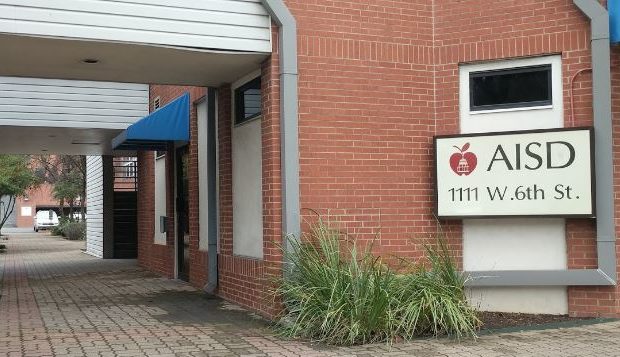AISD Board of Trustees contemplates deep cuts to the budget
Thursday, May 3, 2018 by
Jessi Devenyns The Austin Independent School District’s preliminary budget for the 2018-19 school year was released on April 23. On April 30, the members of the AISD Board of Trustees weighed in with their thoughts on how to continue to fund administrators and teachers while grappling with the staggering $30 million deficit that the school district is facing.
Chief Financial Officer Nicole Conley Johnson summed up the scenario in which AISD finds itself in her introduction. “Revenue is far lower than what it costs to maintain operating expenses in the district,” she said.
Currently, the largest portion of operating expenses is allocated to staff payroll, which amounts to 86.2 percent of the annual budget. So, in order to close the widening deficit gap, AISD is going to have to do more than cut lawn-mowing contracts.
“Those hard decisions to me seem to be all about closing schools,” said Trustee Edmund Gordon.
Superintendent Paul Cruz suggested a softer approach, saying there is an option to combine classes and increase the current 29-to-1 student-to-teacher ratio that is in place on Austin campuses.
“Another radical idea would be just to split the district,” offered Trustee Ann Teich, “(and) come out from under this onerous recapture.”
Although it is a tangled issue, a large part of the reason for AISD’s shrinking revenue comes from the decline in student enrollment it has experienced over the last several years, which Conley Johnson said is forecast to continue. Both administratively and financially, students are vital to a school system. While there is no need to explain why a school district needs students to operate classrooms, the reason that students are financially important is more complex.
In Texas, student attendance and enrollment is weighed heavily when the state decides how much money it gives each school. Once that is determined, the state then looks at how much a district can raise with local property taxes. If a district collects more property taxes than the basic amount the state says the district needs, the difference goes back to the state in the form of “recapture.”
This system has been a thorn in the side of AISD for years, but it is now starting to fester.
“I remember when I first started in this district, recapture represented about 11 percent of this pie, and now it’s grown to over 30 percent,” said Conley Johnson. This year, the amount AISD will get to keep will decrease one more percentage point from last year, or $7.3 million.
According to Cruz, “It’s a turning point for us, the way this is affecting us.”
In order to bridge the budget gap for this year, AISD is going to have to borrow from its reserves, which Conley Johnson said will only last another three years.
Conley Johnson also highlighted that the continued deficit the district is facing is not for want of trying. She explained that travel and food expenses for teacher development have been cut, contracts have been reduced and anything that could qualify as an extraneous expense is already out the door.
With no apparent answers to the conundrum, trustees began brainstorming potential ideas. Some suggested removing levels of administration while others suggested eliminating the historic property tax exemptions.
Trustee Jayme Mathias even suggested cutting the board’s food budget in a show of solidarity for those experiencing budget cuts.
Amid all the budget cut discussions, Conley Johnson reminded the board that the proposed deficit could increase based on the salary increase discussions that are in process. Currently, there is no allocated raise for teachers’ salaries.
Regardless of the results of these discussions, there is no question that AISD has a lot of work ahead to keep the budget from affecting students’ education while also ensuring that it adequately reduces operating expenses.
“I’m ready to try the most radical discussions because we are being pushed to that point,” said Teich.
The final budget will be adopted in June, and the subsequent property tax rates will be set in August.
The Austin Monitor’s work is made possible by donations from the community. Though our reporting covers donors from time to time, we are careful to keep business and editorial efforts separate while maintaining transparency. A complete list of donors is available here, and our code of ethics is explained here.
You're a community leader
And we’re honored you look to us for serious, in-depth news. You know a strong community needs local and dedicated watchdog reporting. We’re here for you and that won’t change. Now will you take the powerful next step and support our nonprofit news organization?









